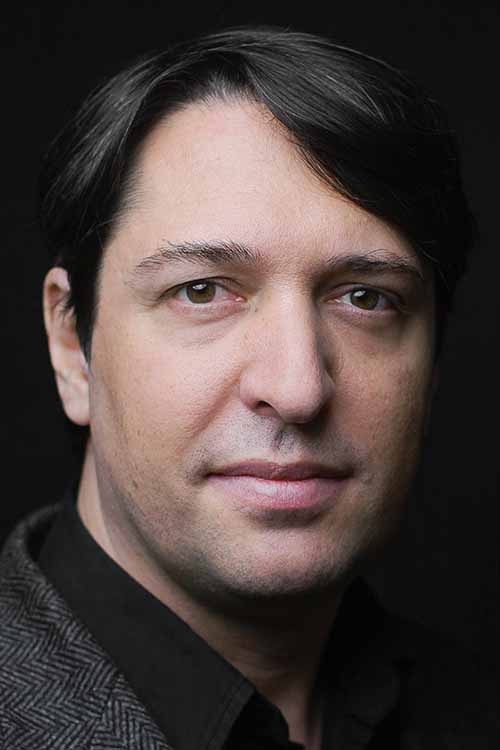

 I recently saw that AT&T is offering a $10,000 reward to anybody who provides information that leads to the arrest and conviction of people stealing copper wiring. The particular announcement is related to a recent theft of copper in South Dallas, Texas, but there have been numerous other thefts. This is not a small problem, and the estimated value of stolen telephone copper is between $1.5 and $2 billion annually. more
I recently saw that AT&T is offering a $10,000 reward to anybody who provides information that leads to the arrest and conviction of people stealing copper wiring. The particular announcement is related to a recent theft of copper in South Dallas, Texas, but there have been numerous other thefts. This is not a small problem, and the estimated value of stolen telephone copper is between $1.5 and $2 billion annually. more
 Nearly 90% of the internet's generic top-level (gTLD) domain names do not have identifying contact information in the Registration Data Directory Services (RDDS) system, according to a report by Interisle Consulting Group. A key finding of the report is the rapid growth of registrar-provided proxy service offerings and the inclusion of these services for both new and existing registrations. more
Nearly 90% of the internet's generic top-level (gTLD) domain names do not have identifying contact information in the Registration Data Directory Services (RDDS) system, according to a report by Interisle Consulting Group. A key finding of the report is the rapid growth of registrar-provided proxy service offerings and the inclusion of these services for both new and existing registrations. more
 Recent court rulings hold ISPs accountable for failing to disconnect users accused of copyright infringement, sparking alarm across the industry. As record labels push for harsh penalties and ISPs warn of the potential for mass disconnections, the debate highlights the flaws of outdated copyright laws and raises critical questions about fairness, enforcement, and the future of internet access. more
Recent court rulings hold ISPs accountable for failing to disconnect users accused of copyright infringement, sparking alarm across the industry. As record labels push for harsh penalties and ISPs warn of the potential for mass disconnections, the debate highlights the flaws of outdated copyright laws and raises critical questions about fairness, enforcement, and the future of internet access. more
 Africa's digital ecosystem is growing rapidly, with internet access becoming a central driver for innovation, business, and socio-economic development. As this digital adoption expands, so too does the importance of domain governance, particularly the effective management of Top-Level Domains (TLDs). Unfortunately, over the years, African registries have struggled to manage their TLDs, often leading to missed opportunities, inefficiencies, and a loss of competitive edge in the global domain market. more
Africa's digital ecosystem is growing rapidly, with internet access becoming a central driver for innovation, business, and socio-economic development. As this digital adoption expands, so too does the importance of domain governance, particularly the effective management of Top-Level Domains (TLDs). Unfortunately, over the years, African registries have struggled to manage their TLDs, often leading to missed opportunities, inefficiencies, and a loss of competitive edge in the global domain market. more
 In October 2023, the Number Resource Organization initiated a process to undertake a significant update to Internet Coordination Policy 2 (ICP-2); the policy which specifies the criteria for establishing new Regional Internet Registries (RIRs). The Address Supporting Organization Address Council (ASO AC) has been tasked with managing the revision process, emphasizing community engagement and transparency. more
In October 2023, the Number Resource Organization initiated a process to undertake a significant update to Internet Coordination Policy 2 (ICP-2); the policy which specifies the criteria for establishing new Regional Internet Registries (RIRs). The Address Supporting Organization Address Council (ASO AC) has been tasked with managing the revision process, emphasizing community engagement and transparency. more
 In the coming months, we're set to witness the largest investment in America's digital infrastructure in history: $42.5 billion that should be a true lifeline for millions of Americans struggling with slow, unreliable, or nonexistent internet connections. But as with any massive government spending program, the devil is in the details - and Republican lawmakers, led by Texas Senator Ted Cruz, are doing their best to ensure those details work against their own constituents. more
In the coming months, we're set to witness the largest investment in America's digital infrastructure in history: $42.5 billion that should be a true lifeline for millions of Americans struggling with slow, unreliable, or nonexistent internet connections. But as with any massive government spending program, the devil is in the details - and Republican lawmakers, led by Texas Senator Ted Cruz, are doing their best to ensure those details work against their own constituents. more
 The City of Shanghai entered the low-orbit broadband satellite market. Shanghai Spacecom Satellite Technology (SSST) launched 18 satellites in August and a second batch of 18 satellites in October. The satellites are being branded as Qianfan, or 'Thousand Sails.' SSST satellites are being launched by the China Aerospace Science and Technology Corporation (CASC) using the Long March 6A rocket. more
The City of Shanghai entered the low-orbit broadband satellite market. Shanghai Spacecom Satellite Technology (SSST) launched 18 satellites in August and a second batch of 18 satellites in October. The satellites are being branded as Qianfan, or 'Thousand Sails.' SSST satellites are being launched by the China Aerospace Science and Technology Corporation (CASC) using the Long March 6A rocket. more
 In the wake of the election, sweeping policy shifts in the information economy are set to accelerate. Expect fast-tracked FCC reforms, Starlink subsidies, and AI-driven oversight to redefine media, tech, and regulatory landscapes. From relaxed antitrust to intensified media control, these eleven reversals signal a move toward deregulation and Chicago School libertarianism, with lasting impacts on U.S. markets and governance. more
In the wake of the election, sweeping policy shifts in the information economy are set to accelerate. Expect fast-tracked FCC reforms, Starlink subsidies, and AI-driven oversight to redefine media, tech, and regulatory landscapes. From relaxed antitrust to intensified media control, these eleven reversals signal a move toward deregulation and Chicago School libertarianism, with lasting impacts on U.S. markets and governance. more
 A CircleID post by Alexander Klimburg takes aim at my article, "The Power to Govern Ourselves," delivered at the Gig-Arts conference in June. That speech, available here on the blog, argued that: "Multistakeholder does not describe a governance model. It never has. It was always a compromised Public Relations concept," one that muddied the distinction between governance by state actors and non-state actors. What really made the Internet institutions unique was their break with sovereignty. more
A CircleID post by Alexander Klimburg takes aim at my article, "The Power to Govern Ourselves," delivered at the Gig-Arts conference in June. That speech, available here on the blog, argued that: "Multistakeholder does not describe a governance model. It never has. It was always a compromised Public Relations concept," one that muddied the distinction between governance by state actors and non-state actors. What really made the Internet institutions unique was their break with sovereignty. more
 DOTZON presents the seventh edition of the Digital Company Brands study. After having introduced the study in 2018, DOTZON continued to expand and enhance the underlying data to display how companies successfully use their Digital Company Brands. The Digital Company Brand is the digital dimension of a company brand and mirrors the "digitalness " of a company. For "Digital Company Brands 2024", all companies worldwide that have their own internet extension were once again analysed. more
DOTZON presents the seventh edition of the Digital Company Brands study. After having introduced the study in 2018, DOTZON continued to expand and enhance the underlying data to display how companies successfully use their Digital Company Brands. The Digital Company Brand is the digital dimension of a company brand and mirrors the "digitalness " of a company. For "Digital Company Brands 2024", all companies worldwide that have their own internet extension were once again analysed. more
 In our physical world, census information is used to inform the planning processes behind the provision of infrastructure, such as schools, hospitals, housing, and similar. It can be used to assess the impact of natural disasters or to understand a society's needs in terms of food and energy security. Demographic data is also used to inform investment and business decisions. You'd think that the Internet itself would be awash with similar information. more
In our physical world, census information is used to inform the planning processes behind the provision of infrastructure, such as schools, hospitals, housing, and similar. It can be used to assess the impact of natural disasters or to understand a society's needs in terms of food and energy security. Demographic data is also used to inform investment and business decisions. You'd think that the Internet itself would be awash with similar information. more
 In CSC's recent insight paper, we address the trend that many business leaders today don't realize the extent to which their modern enterprise -- and its millions of digital assets -- rely on. It's a vast domain ecosystem that needs to be protected from online threats. Often, to better understand this need for domain security, we need to understand how critical and interconnected domains are within a business. more
In CSC's recent insight paper, we address the trend that many business leaders today don't realize the extent to which their modern enterprise -- and its millions of digital assets -- rely on. It's a vast domain ecosystem that needs to be protected from online threats. Often, to better understand this need for domain security, we need to understand how critical and interconnected domains are within a business. more
 As the saying goes, elections have consequences. The consequences are underscored in the recent U.S. Presidential election and the potential impact on the Internet, infrastructure and cybersecurity. In the context of the CircleID global community, it seems worth asking where things are headed? It does beg for an analysis of what is actually proposed in Presidential Transition Project 2025 related to things internet and cybersecurity. more
As the saying goes, elections have consequences. The consequences are underscored in the recent U.S. Presidential election and the potential impact on the Internet, infrastructure and cybersecurity. In the context of the CircleID global community, it seems worth asking where things are headed? It does beg for an analysis of what is actually proposed in Presidential Transition Project 2025 related to things internet and cybersecurity. more
 The reports of multistakeholder Internet governance's demise are greatly exaggerated. This article explores the dual nature of multistakeholderism: its evolving, sometimes contentious practice as the "First Body," and its enduring principle of actor plurality as the "Second Body." Despite criticism and challenges, multistakeholderism remains crucial for a resilient, non-state-led Internet, underscoring the need to adapt and uphold its foundational pluralism. more
The reports of multistakeholder Internet governance's demise are greatly exaggerated. This article explores the dual nature of multistakeholderism: its evolving, sometimes contentious practice as the "First Body," and its enduring principle of actor plurality as the "Second Body." Despite criticism and challenges, multistakeholderism remains crucial for a resilient, non-state-led Internet, underscoring the need to adapt and uphold its foundational pluralism. more
 Thanks to wide adoption of the Infrastructure as Code (IaC) approach, programmatic provisioning of cloud resources is slowly transforming almost every aspect of computing, with administration of web apps having emerged as a key use case. With IaC, it's possible to streamline resource management tasks, shorten time-to-market, control costs, and scale at will. The adoption of continuous integration and continuous delivery (CICD) pipelines is already making a huge difference in web app deployment and cloud resource management. more
Thanks to wide adoption of the Infrastructure as Code (IaC) approach, programmatic provisioning of cloud resources is slowly transforming almost every aspect of computing, with administration of web apps having emerged as a key use case. With IaC, it's possible to streamline resource management tasks, shorten time-to-market, control costs, and scale at will. The adoption of continuous integration and continuous delivery (CICD) pipelines is already making a huge difference in web app deployment and cloud resource management. more
Sponsored byCSC

Sponsored byWhoisXML API

Sponsored byIPv4.Global

Sponsored byVerisign

Sponsored byVerisign

Sponsored byRadix

Sponsored byDNIB.com
